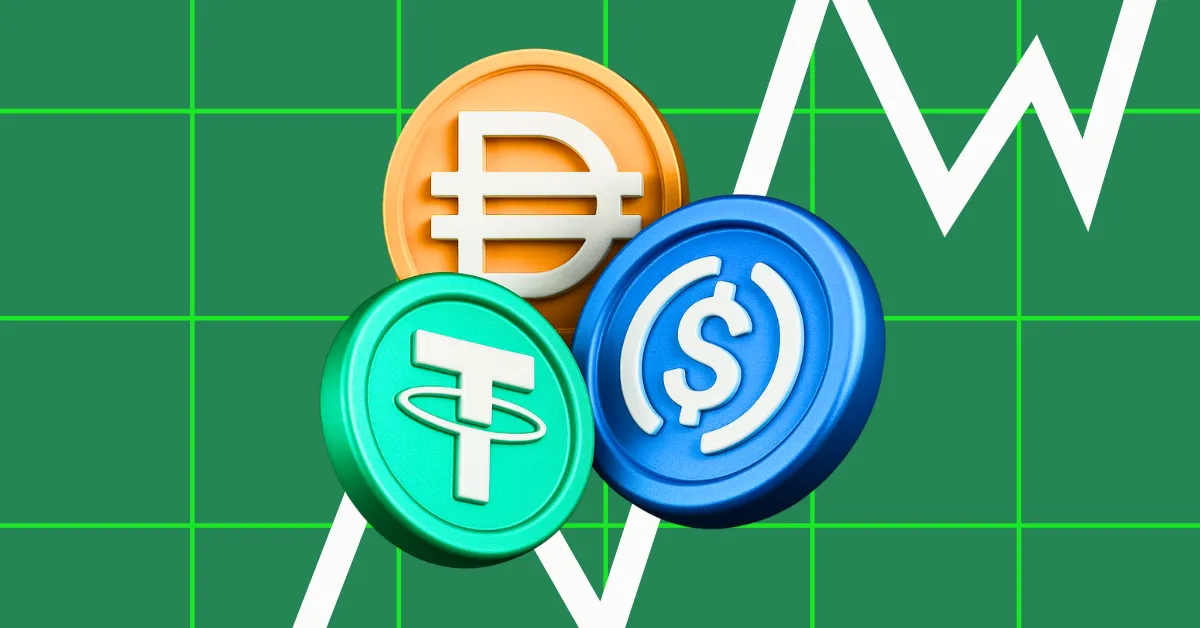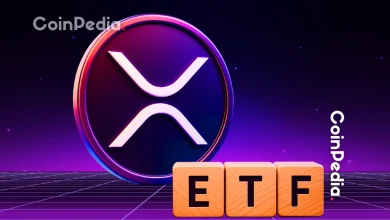
Crypto’s original promise was borderless finance, and stablecoins have delivered the same. In 2025, USDT, USDC, and their competitors have grown from simple trading tools into a new digital payment modes. This is right from businesses, gig-workers, and ordinary people seeking a haven from inflation. In this report, I talk about how stablecoins are shaping, rather will shape the global economies.
Stablecoins: By the Numbers
| Metric | Value | Notes |
| Annual stablecoin transaction volume | $27.6T | Exceeds Visa/Mastercard Source: fxcintel |
| Share of stablecoin flows cross-border | 64% | Remittances, paymentsSource: fxcintel |
| Argentina stablecoin circulation | $11B | 3%+ of M1 money supply |
| Nigeria stablecoin flows | $24B/Year | Rising despite crackdowns Source: linkedin |
| Turkey stablecoin transfer volume | $63B/Year | 3.7% of GDP Source: linkedin |
How Local Stablecoin Economies Take Root
What is a “Dollarized” Crypto Economy?
A local stablecoin economy forms when people use digital dollars (like USDT, USDC) for saving, spending, and doing business. Which is often outside any traditional bank. In high-inflation nations, stablecoins act like underground “dollarization” but operate 100% via apps, P2P trades, and social media.
How it Works:
- Locals swap out local currency for USDT/USDC on exchanges or informally.
- Stablecoins are used for rent, groceries, business payments, freelance wages, and cross-border trade.
- No bank required; deals happen over messaging apps, in person, or using crypto fintech apps.
Case Studies: Argentina, Nigeria, Turkey
| Country | Annual Inflation | Stablecoin Penetration | Local Highlights |
| Argentina | 140%+ | $11B annual, 3% M1 | Apps like Lemon Cash. Salaries & rent paid in USDT |
| Nigeria | 28% | $24B/year | Remittances & crypto P2P markets on WhatsApp |
| Turkey | 54% | $63B/year, 3.7% of GDP | USDT used as hedge, merchant settlements, B2B payments |
Argentina: The “Cepo” and Stablecoin Survival
Currency controls (cepo) keep dollars scarce. Argentines pay a 30% premium, also called crypto blue rate to buy USDT via apps or WhatsApp groups. Trusted crypto fintechs like Lemon Cash, Buenbit, and Binance have become household names.
“I get paid in USDT by international clients, keep some on Binance, and top up my prepaid crypto card to buy groceries. The banks are irrelevant.”
— Martina Diaz, Buenos Aires freelancer
Nigeria: Remittance Innovation and P2P Evolution
After crackdowns on bank-facilitated crypto transfers, Nigerians turned to P2P. USDT transactions on WhatsApp, Telegram, and street-level cash swaps are the norm. Workers get paid globally in stablecoins, with P2P volumes reaching record highs even after regulatory pressure.
“If I wait for a bank transfer, it takes days and costs too much. With USDT, I get money instantly and sell it to whoever offers the best naira rate.”
— Chinedu E., Lagos e-commerce merchant
Turkey: Stablecoin as a Hedge and Store of Value
Surging inflation and lira volatility make stablecoins a Turkish favorite, not just for savings, but business settlements. Last year, Turkish stablecoin usage equaled 3.7% of GDP, with demand remaining even with easier access to regular USD.
“I price my contracts in USDT because clients and suppliers all trust it, and I dodge daily swings in the lira.”
— Yilmaz K., Istanbul web developer
How Stablecoins Power Cross-Border Payments
“Digital Sandwich” Payment Model
- On-ramp: Convert local cash to USDT/USDC at exchangers, ATMs, or via apps.
- Transfer: Move stablecoins instantly and cheaply worldwide—no middlemen.
- Off-ramp: Spend directly (with crypto cards/vendors), or cash out back to local fiat via P2P.
| Step | Tools/Methods | Speed | Typical Cost |
| On-ramp | Fintech apps, P2P cash | Minutes | 0.5-3% fee |
| Blockchain Tx | USDT/USDC (TRON, Solana) | Seconds | Near zero/transact |
| Off-ramp | ATMs, informal swap, apps | Minutes-Hours | 0.5–3% fee |
“Stablecoins slash payment times from days to seconds. Businesses see instant settlement and clear FX conversion. It is a revolution compared to legacy rails.”
— McKinsey & Co., July 2025
Regulation: The Fight for Control
Recent Headlines
- Argentina (2025): Tax authority steps up crypto transaction reporting rules, requiring local exchanges to disclose stablecoin user balances over $2,000. Rumors of a digital peso pilot, but public demand for USDT/USDC remains rampant.
- Nigeria (Q2 2025): Central Bank reverses total crypto ban, launching a “Crypto Regulatory Sandbox.” New rules target P2P stablecoin dealers, but volumes surge anyway. Licensed crypto exchanges now must report suspicious activities monthly.
- Turkey (2025): Parliament passes stablecoin oversight statute. New national exchanges must screen transactions, verify sources of funds, and adhere to “Supervisory Sandbox” before launch. However, retail traders still flock to offshore apps.
- Global: The U.S. and Europe push for global stablecoin reserves, KYC, and “travel rule” compliance—impacting how even local economies must track stablecoin flows.
Regulatory Timeline (2023–2025)
| Year | Event | Impact |
| 2023 | Argentina: Crypto tax bill passed | “Shadow dollarization” doesn’t slow; usage surges |
| 2024 | Nigeria: blanket crypto ban | P2P markets explode; informal remittances double |
| 2025 | Turkey: Stablecoin law, “sandbox” for fintech | Regulation struggles with offshore/underground activity |
| 2025 | US/EU: new KYC/AML rules for stablecoin issuers | International transactions scrutinized; local adoption undeterred |
The Social Reality: Inclusion, Opportunity, and Risk
Inclusion & Economic Autonomy
Stablecoins offer the unbanked fast, borderless access to global money. Freelancers, international workers, and even vendors break local currency monopolies, saving and transacting in “digital dollars”—protecting wealth from hyperinflation.
Risks on the Ground
- Legal uncertainty: Everyday users can face sudden rule changes, asset freezes, or new taxes.
- Sovereignty threat: Governments worry about losing control over money supply and capital flows.
- Scams and fraud: The “informal” nature of many economies puts users at risk of bad actors and platform hacks.
What’s Next?
Stablecoins have moved from trading tools to everyday digital cash, and governments are racing to catch up. Over the next five years, three outcomes are likely:
- Optimistic — Regulated Integration:
Authorities license issuers instead of banning them. Banks and fintech apps embed USDT and USDC into payment systems, cutting cross-border fees below 1% and boosting financial inclusion. - Pessimistic — Fragmentation and Crackdowns:
Tighter rules and enforcement push usage underground. Some stablecoins face de-pegging or reserve scrutiny, driving users to informal P2P channels with higher costs and fraud risk. - Hybrid — Tolerated but Controlled (Most Likely):
Retail use is allowed under strict KYC, while high-value transfers are heavily monitored. CBDCs roll out, but adoption lags wherever stablecoins are trusted.
Leading Stablecoins in Local Economies (2025)
| Stablecoin | Global Market Cap | Adoption Hotspots | Key Use Cases |
| USDT (Tether) | $107B | LatAm, Asia, EMEA | P2P, commerce, remittance |
| USDC (Circle) | $45B | US, Nigeria, Turkey | Freelance, trade, business |
| PYUSD, EURC | $4.5B (PYUSD) | US/Europe | Remittance, EU corridor |
Final Take
The rise of local, dollarized stablecoin economies is reshaping how the world moves money creating opportunity on the grassroots but also challenging the very foundation of national currencies. As USDT/USDC networks become fintech infrastructure, expect a continued tug-of-war between user demand, institutional adoption, and the imperative of government oversight.
My view: “Stablecoins aren’t a fad. In places where money fails, they have already become everyday digital cash, regulated or not. The question is not if, but how, governments adapt.”
Never Miss a Beat in the Crypto World!
Stay ahead with breaking news, expert analysis, and real-time updates on the latest trends in Bitcoin, altcoins, DeFi, NFTs, and more.
FAQs
They are digital dollars offering fast, low-cost global transfers without banks.
Funds convert from local fiat to a stablecoin, move on-chain internationally, then convert to the recipient’s fiat—reducing intermediaries and settlement time. This structure underpins many stablecoin payment products and is widely referenced in industry primers.
Yes, stablecoins settle in seconds at near-zero cost vs. days and high fees.
The $27T annual volume already beats Visa/Mastercard, with growth accelerating.
They use crypto fintech apps, wallets, and APIs to accept, pay, and settle in USDT/USDC.
Trust with CoinPedia:
CoinPedia has been delivering accurate and timely cryptocurrency and blockchain updates since 2017. All content is created by our expert panel of analysts and journalists, following strict Editorial Guidelines based on E-E-A-T (Experience, Expertise, Authoritativeness, Trustworthiness). Every article is fact-checked against reputable sources to ensure accuracy, transparency, and reliability. Our review policy guarantees unbiased evaluations when recommending exchanges, platforms, or tools. We strive to provide timely updates about everything crypto & blockchain, right from startups to industry majors.
Investment Disclaimer:
All opinions and insights shared represent the author's own views on current market conditions. Please do your own research before making investment decisions. Neither the writer nor the publication assumes responsibility for your financial choices.
Sponsored and Advertisements:
Sponsored content and affiliate links may appear on our site. Advertisements are marked clearly, and our editorial content remains entirely independent from our ad partners.








